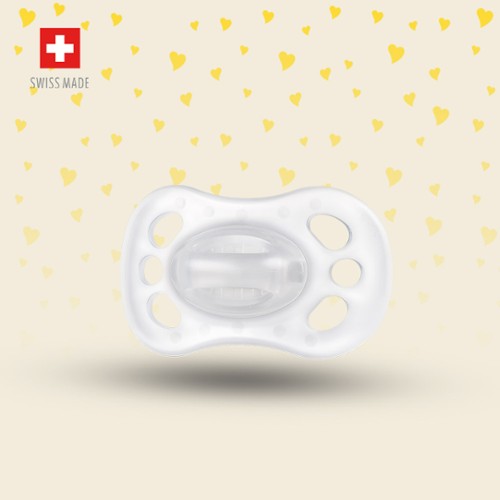Gas and colic are two different phenomena.
If babies swallow a lot of air when they are sucking on a pacifier, the air in their stomach could cause discomfort, referred to as gas. But this does not occur frequently.
The cause for colic is still unknown, but there are some theories such as an immature digestive system, lactose intolerance, allergies, or changes in the normal bacteria of their digestive system.3 Swallowing additional air during feeding can aggravate the situation. It is often difficult to calm babies during a colic episode, they cry intensely and long, often with clenched fists and curled up legs.
Doctors often diagnose infant colic based on the ‘rule of three’ 3,4
- crying for more than three hours per day,
- more than three days per week, and
- persists for three weeks in a row or longer.
Symptoms usually start to improve around 10–12 weeks.
One tip to help soothe your baby is to offer a pacifier. 4 For many babies, suckling can be soothing and helps them calm their emotions.























